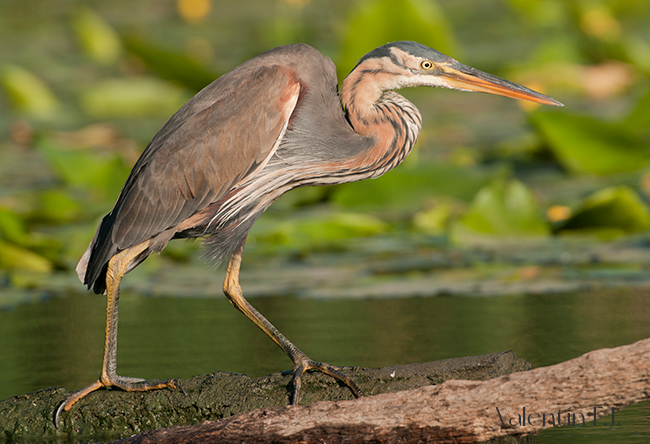Order: Ciconiiformes.
Family: Ardeidae.
This species could only be confused with the Grey Heron, which has a grey neck and wing covers and light-colored underparts.
The plumage between male and female is very similar, if anything, the male has longer and wider shoulder feathers and a deep brown color, while the female has narrow and narrow shoulder feathers with a light brown color.
It is possible to recognize 3 different ages:
Juvenile specimen: has a brown crown. The neck is light brown with a slightly speckled pattern, lacking black lines, so it does not have the dark line that runs from the base of the beak to the nape. These individuals also lack the typical dark “bun” that adults have. They also differ from adults in their unornamented scapulars, generally a speckled light brown.
2nd year specimen: has a black crown mixed with brown feathers. The back feathers and wing covers are brown with a grayish tint. The scapular feathers are ornamented and the chest feathers are short, meaning the ruff feathers do not hang yet. The juvenile primaries and secondaries are still retained and are brown with high wear.
Adult specimen: has a completely dark black crown. The sides of the neck are tawny with a long dark line. The scapular feathers are ornamented from the previous age and the ruff feathers are long.
The Purple Heron undergo a complete post-nuptial molt, which usually starts in June and usually ends in the wintering areas of each individual. The post-juvenile molt is a partial molt that takes place in the wintering areas. This molt includes body feathers and some wing covers. Both adults and juveniles undergo a reduced pre-nuptial molt to the ornamental neck feathers.
Primaries: 10 per wing.
Secundaries: 16 per wing.
Rectrices: 12.


